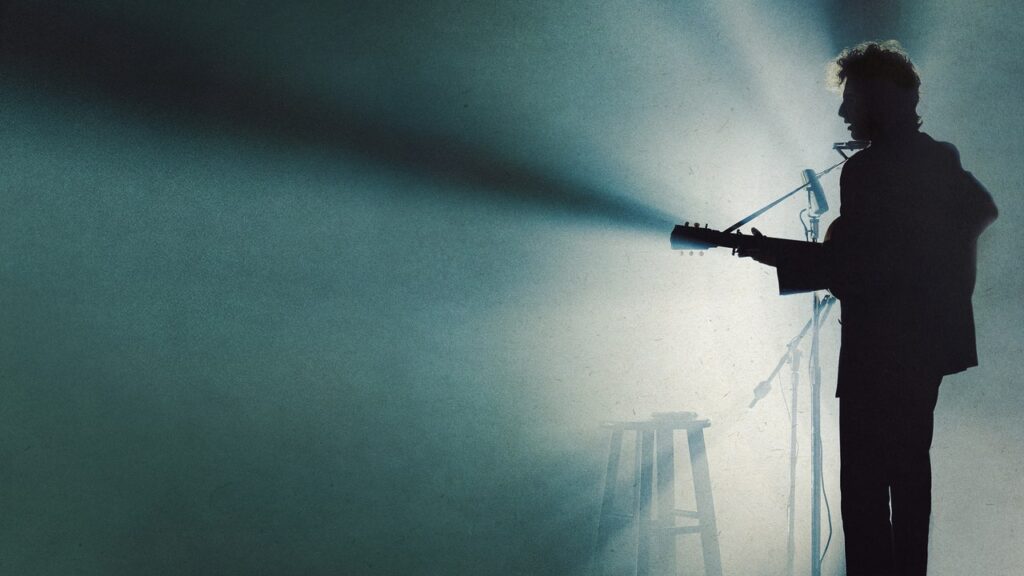How would you characterize the Greenwich Village that Bob Dylan showed up at in 1961? How did you go about recreating it?
James Mangold: I’m 61 years old, so I was born in late ‘63 in the city. There’s a sense memory I have of downtown and the city at that time, which, in that moment, was inexpensive to live in. You had Chinatown and Little Italy and a profound Hebrew presence on the Lower East Side, but then you had artists and musicians and truckers and pickle factories with barrels out front with cucumbers in brine and the smell of vinegar in the air and knish sellers with carts. We did as much as we could to get the smell of it, and we were also always throwing garbage on the street [while filming], because I remember from my childhood the omnipresent blowing wrapper, the urban tumbleweed. In addition to the working-class people and conventional businesses, there were businesses tailored to the artistic crowd—the clubs, which are not the way we perceive clubs now. They weren’t designed with music in mind. The Gaslight was a kind of basement that was turned into a small club. Gerde’s Folk City was originally an Italian restaurant. All of these historic concerts introducing great new artists happened in these unique spaces and streets that really don’t exist in contemporary New York.
François Audouy: I imagine it as a cultural petri dish that was bubbling with creativity, where you could walk down the street and bump into Jack Kerouac or Allen Ginsberg or Edward Hopper. There were so many artists in a small footprint, and they were there because the rents were cheap. Rather than recreating facades exactly, I wanted to capture the feeling and spirit of this technicolor world of jazz clubs, coffee shops, wine bars, and restaurants. And we did; we took over a block-and-a-half in Jersey City and recreated a 360-degree world. We recreated Kettle of Fish [which still exists in the Village today] and Café Figaro, the Gaslight. There was also the Folklife Center, a whole store converted into a mecca of everything folk. That’s the first place Bob goes when he gets there. It’s a pilgrimage that he takes.
JM: It was never conceivable to shoot all [the locations] in New York because you’d be spending all your time erasing [what’s been built since.] I took a real page out of Steven Spielberg’s book—he shot West Side Story in Paterson and Jersey City in New Jersey. Many of our crew and location people are friends, and we pursued a similar strategy to use the neighborhood sections of New Jersey that have not been redeveloped in the past fifty years and still had the bones. There was a lot of work to do, but you didn’t have to fight back all the new construction. And on a simple level, if you take any block in New York, especially in the Village, there are probably a few Michelin restaurants and other establishments that are not interested in closing for a week to let you show there. Jersey City was Macdougal Street, and when we were in Midtown Manhattan we were actually in Paterson. Then there were a couple of times we were in New York for the exteriors of the courthouses and the Chelsea Hotel. Jersey City and Hoboken have many neighborhoods that are Village-esque with many townhouses, small restaurants, coffee shops, and corner bakeries that could lend themselves to a conversion. Paterson has this beautiful, built-up Art Deco section.


